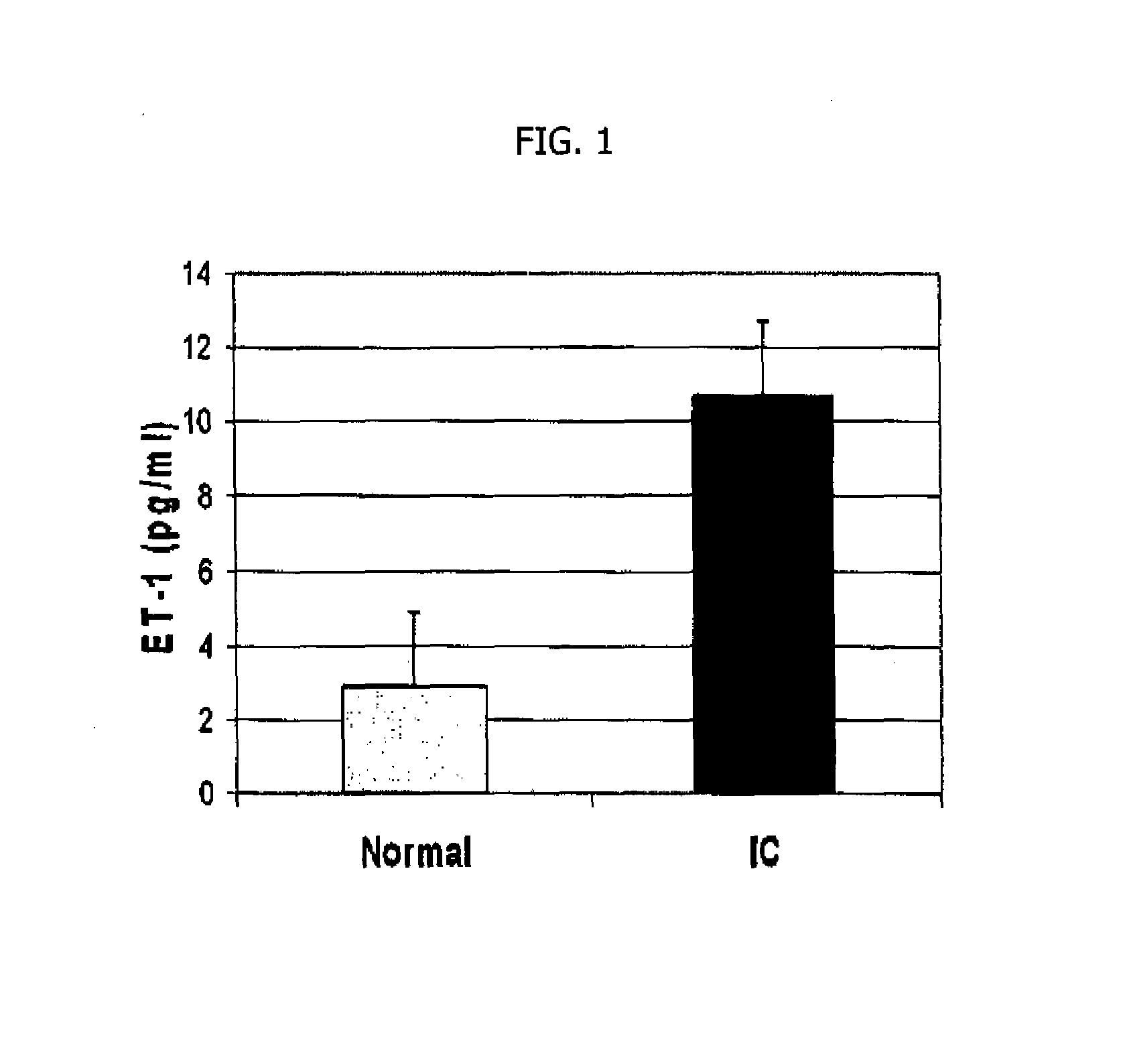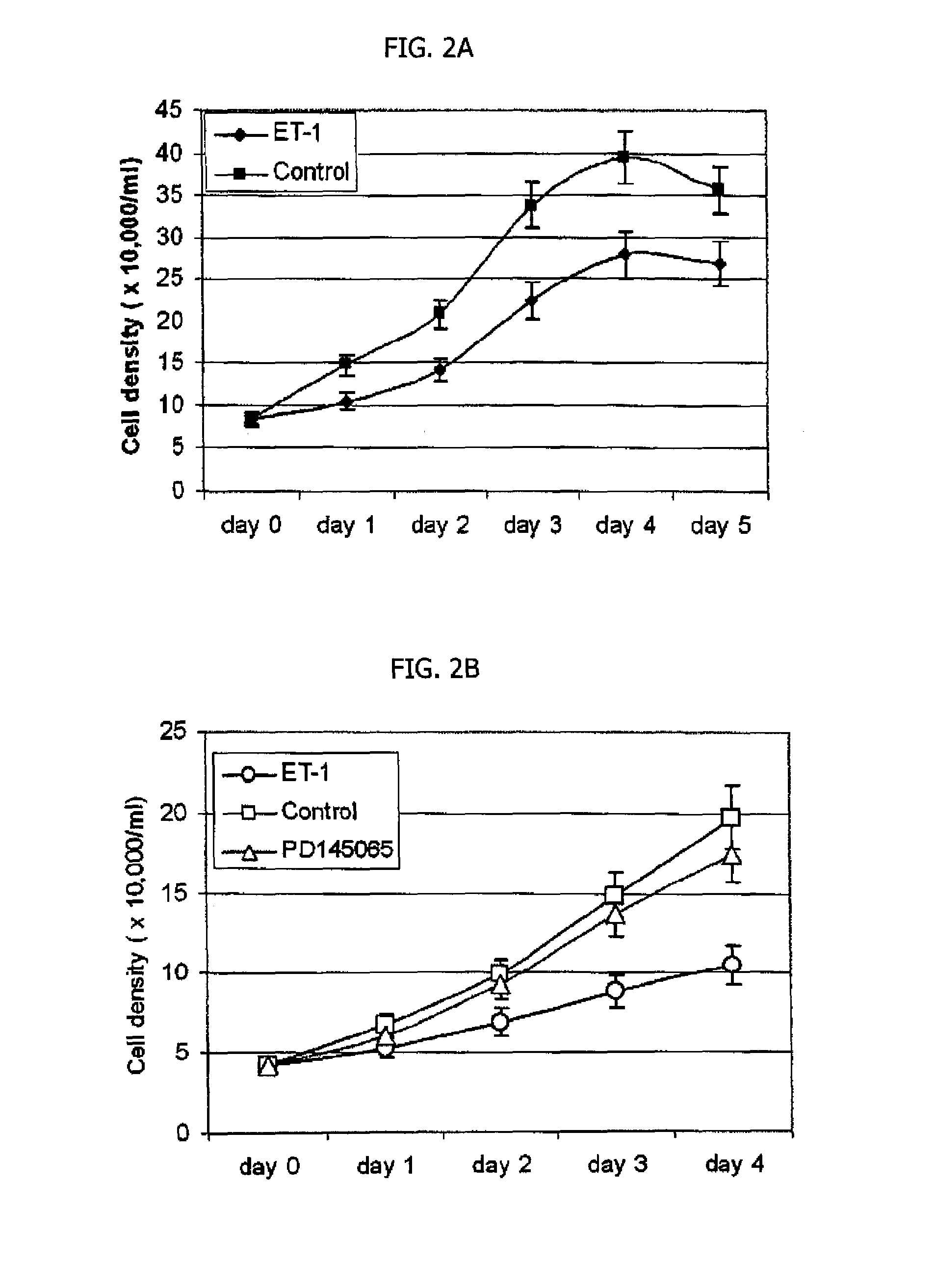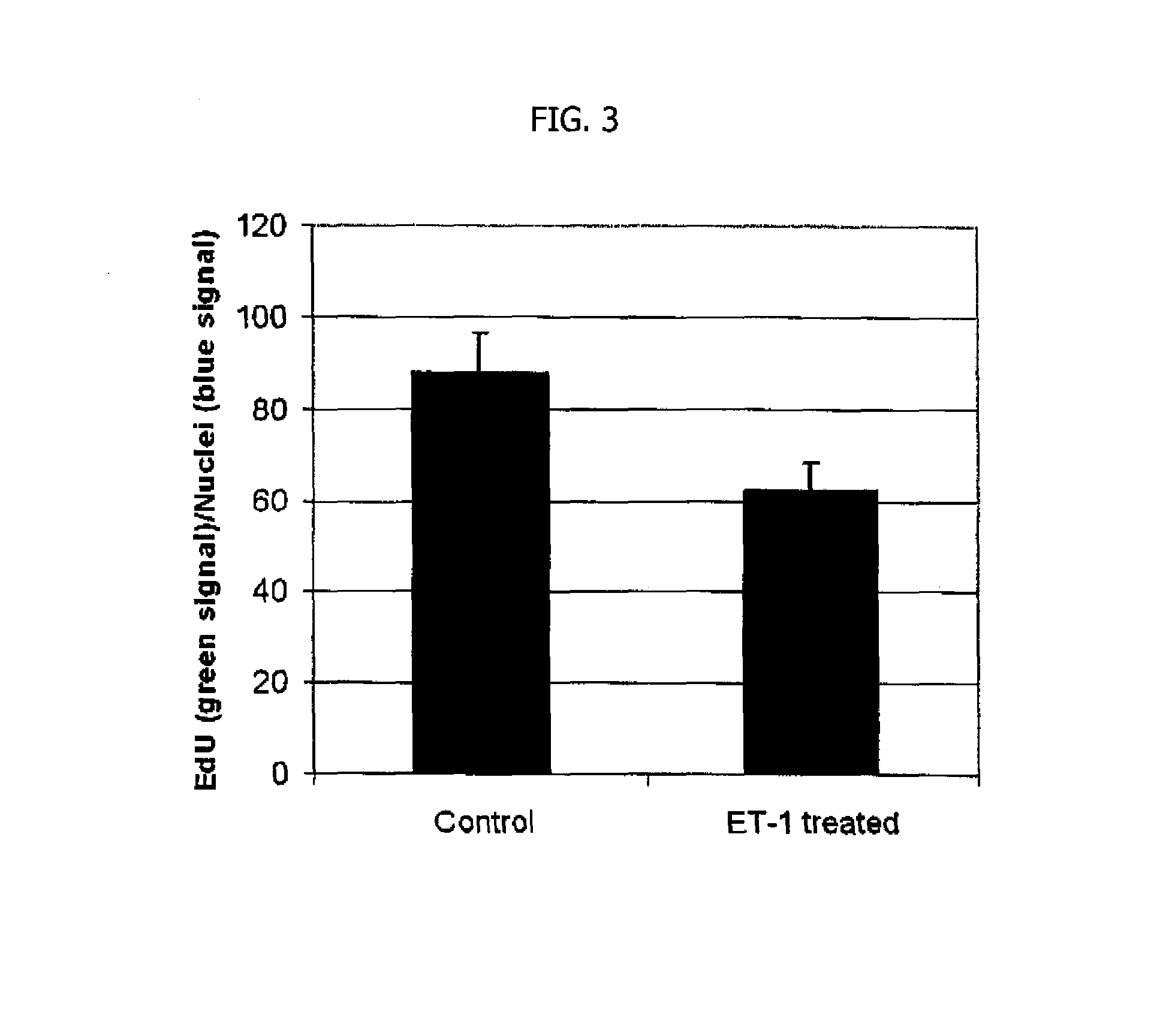Method of diagnosing and treating interstitial cystitis
a technology of interstitial cystitis and diagnosis method, which is applied in the direction of antibody medical ingredients, instruments, drug compositions, etc., can solve the problems of c-fiber activation, irritating the bladder wall, and leaky epithelium lining the bladder wall, so as to reduce the amount or production of et-1 and inhibit the effect of action
- Summary
- Abstract
- Description
- Claims
- Application Information
AI Technical Summary
Benefits of technology
Problems solved by technology
Method used
Image
Examples
example 1
General Experimental Methods
[0079]A. Statistics
[0080]Data are described appropriately before proceeding to analysis. Biomarker expression and all other continuous data are presented as sample means (±SEM). Graphical methods are used to examine the distribution and quality of the data. Group comparisons are performed using ANOVA. Categorical variables are summarized by proportions and compared across groups using standard chi-square tests of association. Exact p-values from Fisher's exact test are calculated for these tests. Logistic regression models are used to identify which patient demographics, study sites, and other clinical factors are predictive of particular phenotypes. In addition, statistical tests for univariate associations between clinical phenotypes and biomarkers are computed using Statistical analysis software (SAS; SAS, Cary, N.C.). Adjustments for clinical sites are made for most analyses. Separate multivariable predictive models are developed for each clinical phe...
example 2
The Expression of ET-1 in the Urinary Bladder Epithelium
[0093]The expression of ET-1 in the urothelium in the bladder biopsies from IC patients is analyzed at the mRNA and protein level by RT-PCR (and Real-time PCR) and Western blot analysis, respectively. The relative increase in the expression of the endothelin at the mRNA level is assessed by quantitative real-time PCR using the published procedure37. Immunofluorescence microscopy is used for in situ localization of the endothelin expression to the urothelial cell layer. For immunofluorescence microscopy, formalin-fixed tissue sections of bladder biopsies previously obtained for the 1CDB (Interstitial Cystitis Database) were prepared as described above. The detailed procedure for performing the immunofluorescence microscopy is provided in Example 1. Briefly, Anti-ET-1 antibody (Calbiochem, San Diego, Calif.; cat. #CP44) is used at a dilution of 1:400 and anti-mouse IgG-Cy3 secondary antibody (Sigma, St. Louis, Mo.; C-2181) at a d...
example 3
Expression of ET-1 in the Urine of Patients with IC
[0098]Endothelin expression is quantitated at the protein level by enzyme linked immunosorbent assay (ELISA). ELISA is performed using the human big Endothelin-1 (ET-1) Enzyme Immunometric Assay kit (Assay Designs, Inc., Ann Arbor, Mich.) to determine human big ET-1 peptide levels in urine samples from five female IC patients. The normal control group was urine samples from four normal healthy females. The ET-1 primary antibody shows little to no cross-reactivity with related endothelin peptides including ET-2 and ET-3. The immunoassay kit has a sensitivity as low as 0.14 pg / ml. Because the two-site “Sandwich” ELISA assays require two antibodies, they can be more specific than RIA assays40.
[0099]Briefly the appropriate number of wells in a 96 well microtiter plate coated with rabbit antibody specific to human ET-1 are washed twice with wash buffer containing phosphate buffered saline with detergent. Next 100 μL of either standard, c...
PUM
| Property | Measurement | Unit |
|---|---|---|
| volumes | aaaaa | aaaaa |
| volumes | aaaaa | aaaaa |
| volumes | aaaaa | aaaaa |
Abstract
Description
Claims
Application Information
 Login to View More
Login to View More - R&D
- Intellectual Property
- Life Sciences
- Materials
- Tech Scout
- Unparalleled Data Quality
- Higher Quality Content
- 60% Fewer Hallucinations
Browse by: Latest US Patents, China's latest patents, Technical Efficacy Thesaurus, Application Domain, Technology Topic, Popular Technical Reports.
© 2025 PatSnap. All rights reserved.Legal|Privacy policy|Modern Slavery Act Transparency Statement|Sitemap|About US| Contact US: help@patsnap.com



